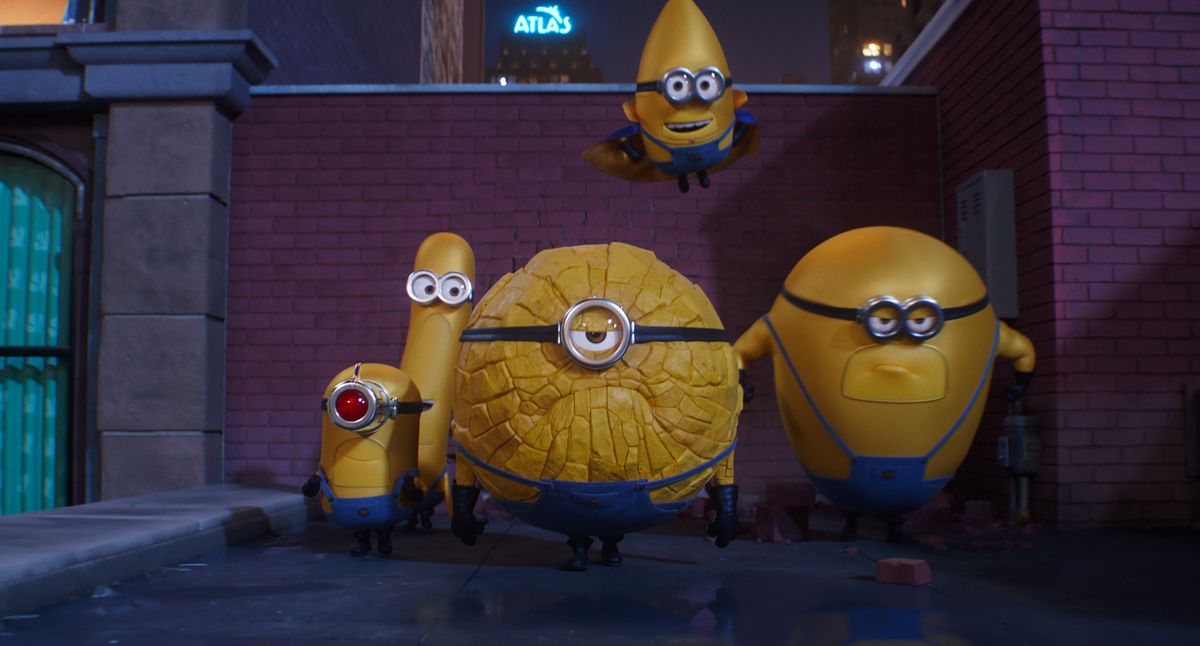Four official movies and two Minions spinoffs in, the world introduced in Pierre Coffin and Chris Renaud’s animated 2010 comedy Despicable Me somehow still has enough steam to power its setting. There’s inherently a lot of narrative and comedic potential in a world where supervillains have networking conventions and schools for aspiring young evildoers, and they treat being a Big Bad like a day job.
But Despicable Me 4 suffers from a weird problem: This world has too much potential. Instead of focusing on just a few threads, Renaud and the rest of the filmmakers try to tackle a bunch of different plotlines without exploring any of them fully — or even connecting them in any meaningful way.
[Ed. note: This review contains slight setup spoilers for Despicable Me 4.]
Image: Illumination
Despicable Me 4 kicks off with supervillain turned family man Gru (Steve Carell) and his family going into witness protection after cockroach-themed villain Maxime Le Mal (Will Ferrell) escapes maximum security prison. With Maxime, who just happens to be Gru’s high school rival, coming after him, Gru and his wife and apparently never-aging children assume false identities as the Cunninghams, a perfectly normal family living in an upper-middle-class suburban neighborhood. Meanwhile, Maxime and his aloof femme-fatale girlfriend, Valentina (Sofía Vergara), hunt Gru down in a giant cockroach-themed aircraft. Oh, and a few of the Minions get superpowers.
All these threads have a lot to explore: Any one of them could be fleshed out into a load-bearing primary plot. But instead, every single possible hook is simply glossed over. None of them are given enough time to develop into something actually compelling, or with enough connective tissue to hold the moving parts together.
And there are even more subplots strung throughout the movie. The family’s preppy preteen neighbor Poppy Prescott (Joey King) is actually an aspiring supervillain who admires Gru and blackmails him into helping her achieve supervillain status. Gru and his secret-agent wife, Lucy (Kristen Wiig), try to fit in among their country-club neighbors. The Minions form a superhero team. Gru and Lucy’s youngest daughter, Agnes (Madison Skyy Polan), faces a moral quandary over lying about her identity. The whole reason the villain hates Gru specifically is because of a grudge from their ninth grade talent show at that school for aspiring bad guys.

Image: Illumination
Think about that: There’s a whole school for aspiring villains, tucked away into the mountains like a bad-guy Hogwarts, and it’s treated as a background set-piece. Similarly, none of the other separately compelling plot points gets explored in a meaningful way. They also all feel separate, never really intersecting. The only connective tissue is the run of physical gags.
Despicable Me 4’s physical comedy is still top-notch, with some choice running gags and background guffaws. There’s one particularly hilarious sequence with the Mega Minions trying (and absolutely failing) to save various people around the city. That scene is full of great jokes, but it goes nowhere. The Mega Minions, so hyped in the movie’s marketing and trailers, barely have any scenes. Even when they’re teed up for the movie’s big climax, they only show up for a split second.
Despicable Me 4 is full of good ideas, with lots of them specifically appealing to what people like about these movies: Minion antics, Gru’s villain-ness versus his normal family life, and over-the-top Big Bad Guy theatrics among them. But all these bits and pieces are jumbled together and not cohesive enough to make sense as a story. The movie is discordant, like a bunch of musicians playing unfamiliar instruments (or a bunch of — dare I say — Minions given instruments) and trying to make a coherent song. But amid that chaos, sometimes the music starts sounding good — a cool jazzy saxophone solo soars briefly above the cacophony. You just have to grit your teeth and ignore the clanging drums and out-of-tune oboes around it.
Despicable Me 4 is out in theaters on July 3.

